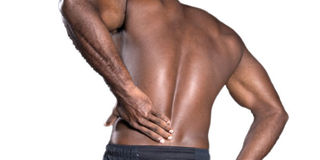How to ease muscle pain after exercise

During the 2016 Christmas holidays Martin Twebaze travelled to his village to spend time with his family. Surprisingly, he was drafted into the local village cell to compete in a football game.
Known as a football player, Twebaze did not turn down the opportunity. On the fateful day when his team played, he entered the pitch feeling very fit. He played the game well from start to finish.
“When I went back home, I slept normally but when I woke up in the morning, I could barely walk. I needed someone to hold me by the hand or use a clutch to walk. Even when I tried to stretch the legs, it was so painful. I started stretching very carefully one day after the other until the pain reduced,” Twebaze recalls, adding: A massage from my brother brought more relief.
Why it happens
When Twebaze called his doctor, he was told the reason he felt the muscle pain was because he had spent a long time without playing football and thus strained his muscles.
“When you strain your muscles and subject them to rigorous and strenuous exercises they have not been used to, they tend to become stiff, painful and ache. It does not only apply with playing football but with every other exercise you do such as jogging, press ups and even when you ride a bicycle after a long time,” Dr Umarashid Guloba of Makerere University Business School explains.
This kind of muscle pain, Guloba says can range from severe to mild and can be felt atleast one day or few hours after completing the exercise. In the medical language, the pain felt after exercising is called Delayed Onset Muscles Soreness (DOMS).
How to prevent muscle pain
While you may consider never doing exercises again, Dr Guloba says it is better to stretch or repeat the same exercise but at a slow and steady pace to eventually get rid of the pain.
“After exercising, your muscles contract and become short in size. When you painfully subject them to a repeated course of working out, you increase your chances of recovering faster and getting used or adopting to the same or other exercises,” Dr Guloba advises.
Other than liniment, bandage and using a deep heat spray that most athletes carry, Dr Guloba recommends applying ice on the painful part, in most cases the thighs, to avert further inflammation. Ice, Guloba says is one of the remedies doctors recommend athletes to use when they sustain severe injuries or piercing pains because of its ability to reduce and eliminate pain much faster compared to other liquid ointments and sprays.
He is, however, quick to caution that it should be applied after the exercise, with no sure deal that you can return to the playfield shortly after applying ice to reduce pain.
When to seek medical attention
In worst cases, when you realise you have developed bruises and a hot skin after exercising, sometimes characterised with the inability to walk or move on your own, Dr Allan Sekyanzi, says this could be a pointer to a more complicated underlying complication such as muscle wear and tear, loss of proper eye sight, change in body temperatures, among other factors.
“When you feel you have severe and constant pain, swollen limbs, a change in urine colour or even a decrease in the amount of urine excreted, contact your doctor for urgent medical attention,” Dr Sekynazi advises.
He recommends that if you feel pain during or shortly after the exercise, it is a situation that is normal. However, in the event that you feel the pain during the exercise or workout, it could be an indicator that there is a problem with the exercise. This type of pain should be treated as a torch from your body to stop the exercise before subjecting your muscles to damage.




